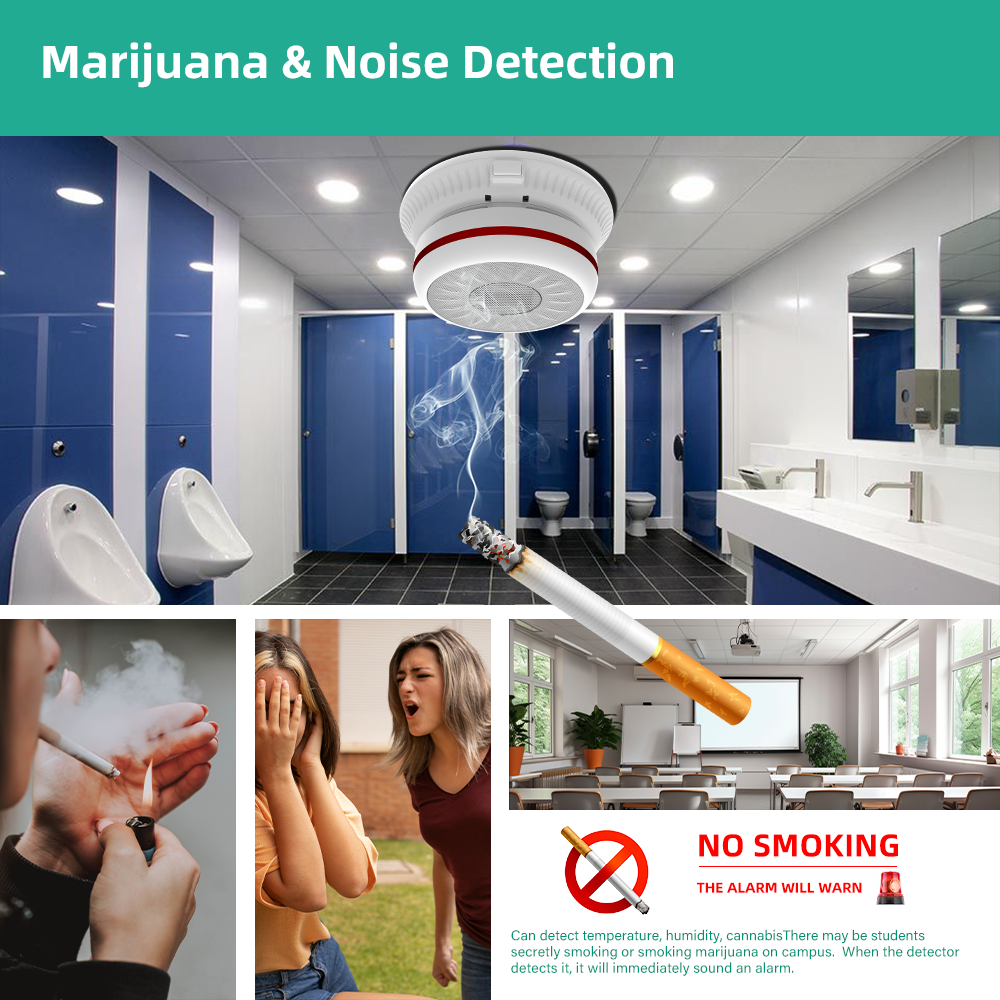Every 3 minutes in American schools, there is a hidden epidemic: a student vapes. Health professionals consider the use of vaping by teens as a major epidemic. According to CDC there are more than 40% of highschool students and 80% of middle schoolers have tried e-cigarettes. The majority (99 percent) of them contain nicotine, a chemical that is addictive and rewires developing brains and often can be used as a means to cigarette smoking. Parents, educators, and administrators are under increasing pressure to act. The vape detector is an advanced gadget that has become an essential item for every campus. There are several leaders in the field, Triton and 3D Sense stand out as vape detectors that schools can use that do far more than simply sound an alarm.

How do Vape Detectors work: Precision without intrusion
Modern vape smoke sensors like the Triton ULTRA smart safety sensor do not rely on audio or video recordings to ensure privacy compliance, while still providing useful information. It makes use of particulate sensors to evaluate the air in real-time. If vape aerosols (like perfumes with strong scents) smoke from cigarettes, marijuana vapor appear the device will send an immediate alert via text message or email to designated personnel. False positives are very low and give administrators the assurance that every notification needs immediate attention.
A single unit can cover the entire bathroom, locker or hallway so that the deployment of this product cost-effective. Triton users typically mention that vaping incidents have decreased significantly within five weeks of the installation. Why is this? Data-driven deterrence. The Triton Cloud Dashboard reveals “hotspots” where vaping occurs most frequently and at what time, allowing the principals to direct hall monitors or security personnel exactly to the areas they’re required.
Beyond Detection: Visualization of Occupancy and Loitering Control
Triton is different from basic vape detectors thanks to its patent-pending occupancy visualisation technology. The ULTRA Sensor measures the duration of a dwell without recording any sound or images. Administrators can view heat maps with colored codes that highlight bathrooms that have become social areas, which are prime spots for vaping as well as prolonged contact that spreads respiratory illnesses.
Stanford Medicine research underscores the stakes: students who vape are five times more likely to contract COVID-19. Vape detectors in schools help improve the air quality by decreasing the concentration of. They also decrease the risk of transmission for airborne pathogens. Post-pandemic this dual effect has pushed these devices from a mere option to essential.
Turning Data into Discipline and Dialogue
Numbers tell an interesting story. Triton’s reports module provides the quantitative proof of incidents’ timingstamps and the locations. It also reveals trends in frequency. Schools are able to present this information to the school board, parent groups and even students. It is easier to convince people that an area has 60% fewer detected incidents following detector installation. Parents will see that the students are focused; they will also be aware of the consequences.
Educators amplify impact by announcing the presence of vape detector from day one. For instance the 3D Sense model is marketed as a deterrent. The guidance materials suggest that students be made aware that the air is watching them. Peer accountability follows: the social cost of alerting students often proves more powerful than any presentation.
A Multi-Front Strategy Schools Can’t Ignore
Vape detectors are not the only method to end vaping. They form part of a larger strategy.
Alerts in real-time identify events in the middle of.
Education – Research-based reports are fueling anti-vaping curriculums.
Deterrence – Signage that is visible and known consequences shift the behavior.
Discipline – Hotspot data justifies targeted enforcement.
Support – Schools offer resources to help struggling students quit smoking.
The CDC declares that to stop this trend “buy-in is required from parents and educators as well as the public.” Vape detectors are the missing link and provide objective feedback instantly, which can turn good intentions into measurable effects.
Simple Installation
Registering devices takes minutes in the Triton Cloud Dashboard. Administrators can add contacts, customize notifications, and set alert thresholds. A demo will demonstrate how intuitive it is. You can arrange an event and view the live hotspot maps and graphs in action.
Conclusion
Every puff you don’t take is a risk to an entire lifetime of addiction. Inconsistently reported bathroom events can be dangerous to your health as as security. Vape detectors for schools like Triton and 3D Sense offer more than surveillance they deliver security, intelligence, and proof of progress. Schools that have them installed aren’t merely reacting to the epidemic of vaping they are also regaining control.
These tools can turn vague worries into real victories. They have a sensor inside every room, occupancy information that are privacy-safe, and quick alert systems. There is no excuse for waiting in an age where 40% of high schoolers have already tried it, and the number of middle schoolers are growing daily. The air in your school is a sign of the times, so be the first to know what it’s saying.